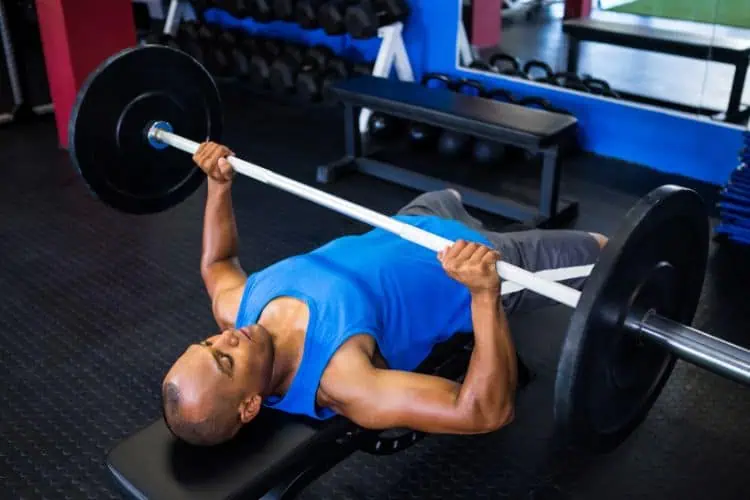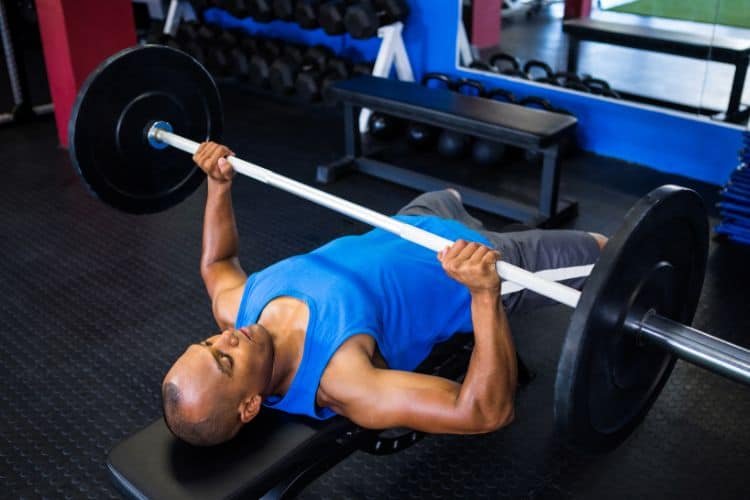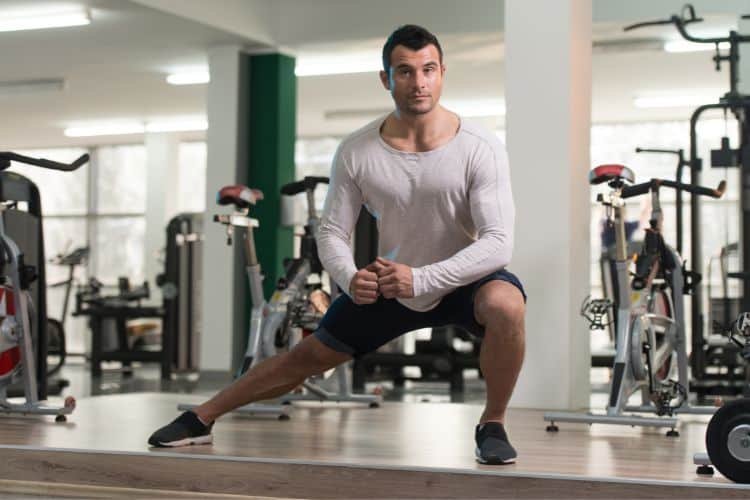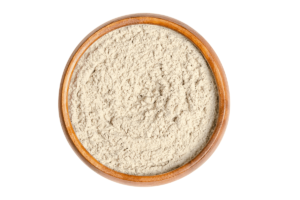
Strength training is an essential component of any well-rounded fitness routine, benefiting not only your muscle mass but also bone density, metabolism, and overall health. When it comes to total body strength workouts, the key is incorporating movements that engage multiple muscle groups to ensure balanced development and efficiency. In this comprehensive guide, we’ll break down what total body strength workouts are, the benefits of doing them, how to structure your routine, and some of the best exercises to include for maximum results.
What Are Total Body Strength Workouts?
Total body strength workouts, as the name suggests, focus on working your entire body in a single session. This type of workout typically involves compound movements—exercises that work more than one muscle group at a time. Rather than isolating individual muscles, total body routines encourage synergy between muscle groups, improving coordination and functionality.
These workouts can be done using various equipment such as barbells, dumbbells, kettlebells, or even your own bodyweight. The goal is to create a balanced routine that strengthens your upper body, lower body, and core in one comprehensive session.
Benefits of Total Body Strength Workouts
1. Time Efficiency
One of the most significant advantages of total body strength workouts is their efficiency. If you’re pressed for time, a full-body routine allows you to hit all major muscle groups in one workout, reducing the need for separate sessions dedicated to specific areas.
2. Burn More Calories
Since total body workouts engage multiple large muscle groups, they tend to burn more calories compared to isolated strength training routines. The more muscles you activate, the more energy your body uses, making it a great option for fat loss.
3. Improved Functional Strength
Full-body workouts focus on compound movements that mimic real-life activities. These functional exercises help you build strength that transfers to daily activities like lifting groceries, climbing stairs, or even sports. By training your body to work as a cohesive unit, you enhance both strength and mobility.
4. Increased Muscle Mass
Total body workouts, especially when combined with progressive overload (increasing weights or reps over time), lead to muscle hypertrophy. Compound exercises like deadlifts, squats, and presses stimulate multiple muscle groups at once, promoting overall growth.
5. Better Recovery
Unlike split routines where you might train specific muscle groups every day, full-body workouts typically allow for more rest between sessions. This extra recovery time helps prevent overtraining and reduces the risk of injury.
How to Structure a Total Body Strength Workout
Designing a total body workout involves choosing exercises that target different parts of your body, while ensuring that you’re not overworking any one area. A well-rounded routine should include movements that focus on:
- Upper Body: Chest, back, shoulders, arms
- Lower Body: Glutes, quads, hamstrings, calves
- Core: Abdominals, obliques, lower back
Here’s how to structure an effective total body strength workout:
1. Warm-Up (5–10 minutes)
Before starting any strength workout, it’s essential to warm up to increase your heart rate, loosen muscles, and prepare your joints for movement. A simple warm-up could include 5–10 minutes of light cardio (jumping jacks, running in place) followed by dynamic stretching or mobility exercises like leg swings, arm circles, and hip openers.
2. Compound Movements First
The core of any total body strength workout should include compound exercises that engage multiple muscle groups simultaneously. These are usually performed with heavier weights and lower reps (6–10 reps), targeting maximal strength and muscle activation.
3. Accessory Movements
After completing your compound lifts, move on to accessory movements. These exercises typically focus on smaller muscle groups or specific movement patterns that support your larger lifts. Perform these with lighter weights and higher reps (10–15 reps).
4. Cool Down (5–10 minutes)
Cooling down is just as important as warming up. It helps bring your heart rate back to normal and aids in muscle recovery. Stretching or using a foam roller are great options during this phase.
The Best Total Body Strength Exercises
Let’s dive into some of the best exercises to include in a total body strength workout. We’ll categorize them by movement patterns for a balanced routine.
H2: Upper Body Compound Exercises
1. Barbell Bench Press
The bench press is a classic compound exercise that primarily targets the chest, but also engages the shoulders and triceps. Using a barbell allows you to lift heavier weights and achieve greater overall strength.
How to Perform:
- Lie flat on a bench with your feet firmly on the ground.
- Hold the barbell with an overhand grip, hands slightly wider than shoulder-width apart.
- Lower the bar slowly to your chest, keeping your elbows at a 45-degree angle.
- Push the bar back up until your arms are fully extended.
2. Pull-Ups
Pull-ups are one of the best bodyweight exercises for upper body strength. They primarily target the lats (back muscles) but also engage the biceps, shoulders, and core.
How to Perform:
- Grab a pull-up bar with a pronated (overhand) grip, slightly wider than shoulder-width.
- Pull your body upward until your chin clears the bar.
- Lower yourself back down with control.
Lower Body Compound Exercises
1. Barbell Squats
Squats are the king of lower body exercises. They target the quads, glutes, hamstrings, and calves while also engaging your core to stabilize the weight.
How to Perform:
- Stand with your feet shoulder-width apart, holding a barbell across your upper back.
- Lower your hips back and down as if sitting in a chair, keeping your chest up and knees tracking over your toes.
- Push through your heels to stand back up.
2. Deadlifts
Deadlifts are another fantastic total-body movement that primarily targets the posterior chain—glutes, hamstrings, and lower back—but also engages your core and upper body for stability.
How to Perform:
- Stand with your feet hip-width apart, with the barbell over your mid-foot.
- Bend your knees and hinge at your hips to grip the bar, keeping your back straight.
- Lift the bar by driving through your heels and extending your hips, keeping the bar close to your body.
Core Strength Exercises
1. Plank
The plank is a simple but effective exercise for building core strength and stability. It engages the abdominals, obliques, lower back, and even the shoulders and glutes.
How to Perform:
- Begin in a push-up position with your forearms on the ground and elbows directly beneath your shoulders.
- Keep your body in a straight line from head to heels, engaging your core.
- Hold the position for 30–60 seconds without letting your hips sag.
2. Russian Twists
Russian twists are great for targeting the obliques and improving rotational strength.
How to Perform:
- Sit on the floor with your knees bent and feet flat.
- Lean back slightly while holding a dumbbell or weight plate in front of you.
- Twist your torso to one side, then the other, keeping your core engaged.
Sample Total Body Strength Workout
Here’s an example of a balanced total body strength workout you can try. Perform this routine 2–3 times per week, allowing at least one rest day between sessions.
Warm-Up (5–10 minutes)
- 5 minutes of light cardio (jump rope, brisk walking)
- Dynamic stretches (leg swings, arm circles)
Workout (3–4 sets of each exercise)
- Barbell Squat – 8–10 reps
- Pull-Ups – 6–8 reps
- Deadlifts – 8–10 reps
- Barbell Bench Press – 6–8 reps
- Plank – Hold for 30–60 seconds
- Russian Twists – 15 reps per side
Cool Down (5–10 minutes)
- Stretch all major muscle groups
- Foam roll for muscle recovery
Progression and Variation in Total Body Workouts
To continue making progress in your total body strength routine, focus on gradually increasing the weight or reps for each exercise over time. This principle of progressive overload ensures your muscles continue to adapt and grow.
Additionally, you can vary your routine by swapping in different exercises that target the same muscle groups. For instance, substitute goblet squats for barbell squats or dumbbell presses for barbell presses to keep things fresh and challenging.
Final Thoughts
Total body strength workouts are a powerful way to build muscle, burn fat, and improve your overall fitness. By incorporating compound movements that target multiple muscle groups, you can maximize your workout efficiency and achieve balanced strength gains. Remember to listen to your body, maintain proper form, and gradually increase the intensity to ensure long-term progress.
Whether you’re a beginner or an experienced lifter, total body workouts offer a versatile and effective approach to strength training.






